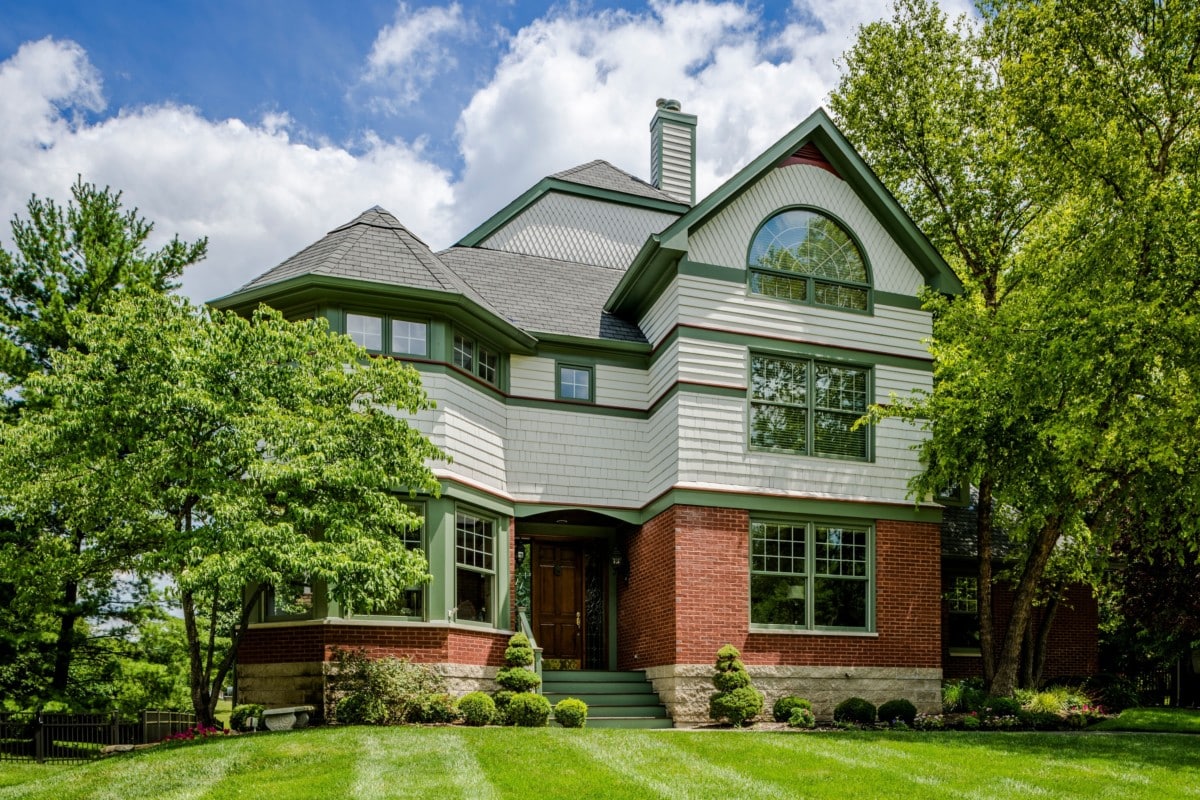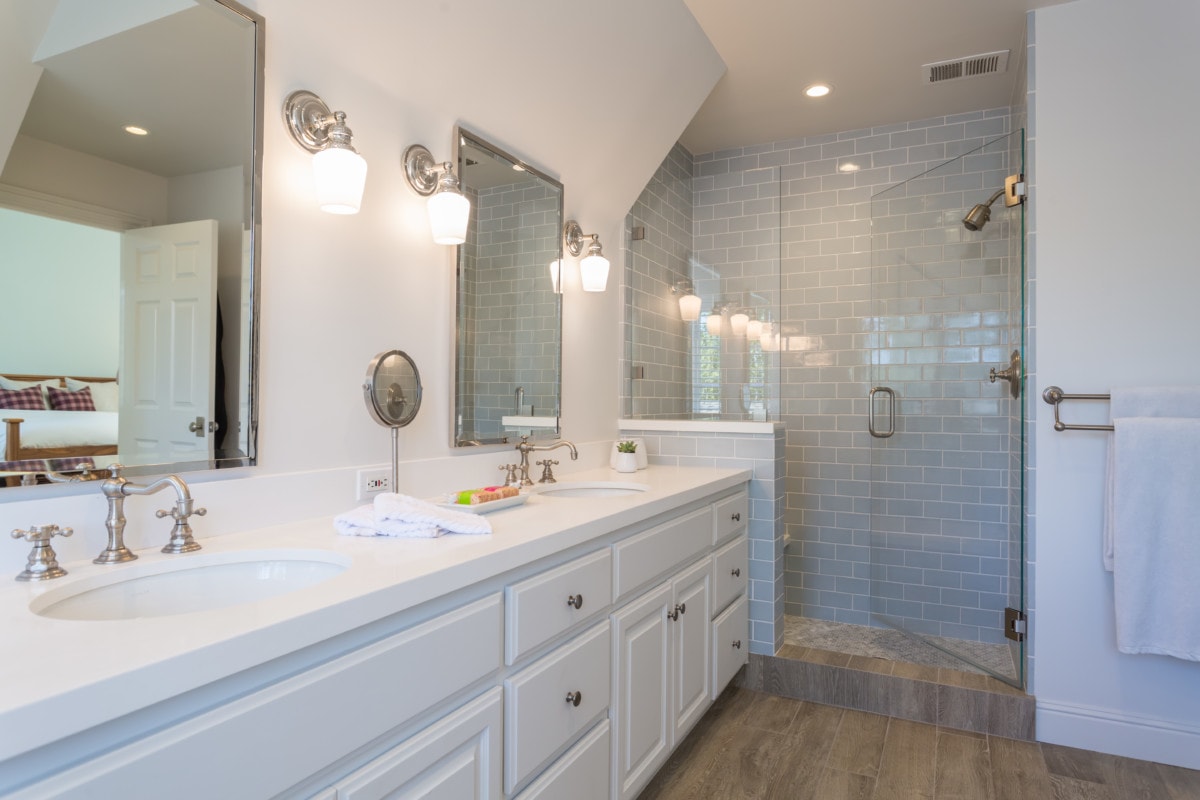DIY (do it yourself) is a common approach to home repairs for a variety of reasons, from budget to perceived simplicity. For those preparing to sell their home, pinching pennies can be a common motivation for tackling fixes without professional involvement. In some cases, DIY solutions are a great way to save time and money with very little risk, but at times, neglecting the abilities of a pro can cause costly problems.

Hire a Professional for These Home Repairs
Not all home repairs are made equal. Basic home projects, like putting up wallpaper are relatively low risk and don’t pose the potential for big problems down the line. However, more substantial projects can require a level of expertise above and beyond what the average homeowner can accomplish. When not handled properly, these kinds of DIY fixes can result in serious damage that could cost a small fortune to fix. That’s why we created a list of projects that should be handled by the professionals, rather than doing it yourself.
Don’t be afraid to call a contractor before you start your DIY renovation or repairs. Be honest with your contractor about your intent to do the repairs yourself and the fact that you’re requesting their assistance with their knowledge, not their service. You will probably have to pay them a fee but that fee grants you their years of knowledge and experience to help guide you thru the project. This help can be priceless! –Miguel Silva and Adam Bennett, Modern Touch Contracting Team
Before starting on any big DIY project look and see if a permit is required by the local building department, and to get that permit before you perform the work. In some states (like Florida) you have to disclose any unpermitted work to potential buyers, which obviously can hurt the sales price of a home. If you fail to disclose the unpermitted work and it is discovered after the sale closes, you might be sued for any repair costs. It is always cheaper and less time-consuming to just get the permit upfront. –Jason Lambert, Hammer and Gavel
1. Electrical Work
Dealing with any notable wiring issues throughout a home is best left in the hands of an electrician. While something simple, like replacing a lightbulb, is certainly possible without a pro, anything larger requires someone trained in electrical systems.
Accessing electrical boxes, installing new lighting fixtures, replacing wiring, adding new wiring, or anything else more complicated has the potential to harm both you and your property without proper oversight. Accidents with electrical work can cause electrocution or start fires, putting both your health and your home at risk. Without the expertise of an electrician, there’s no way to know whether the tutorials you’re reading or viewing online are appropriate for your property.
Rely on the professionals when it comes to upping your smart home capability. You might be able to buy it on Amazon, but that doesn’t mean you can install it correctly. If you can’t get it working yourself and end up calling out the pros, they often will not work on homeowner purchased materials due to warranty issues. –Success Group International
2. Plumbing
Plumbing, like electrical work, can be tricky to get right for those without formal training. It’s not unusual for DIY home repairs to cause burst pipes or leaks, opening the door for potential water damage to your home. When these leaks or broken pipes are found within walls, or difficult to detect, it can become a serious issue.
Before trying to do something like replacing a pipe or installing new fixtures, contact a plumber to make sure your repairs are appropriate and up to code. It’s cheaper to hire a professional for small tasks from the start than to bring in a plumber once a problem arises. Installing a new faucet is much cheaper than installing a new faucet and fixing the problems caused by a DIY installation gone awry.
Mold Remediation is a significant concern for homeowners. Properly handling mold is critical to avoid additional damages. It is easy to make things worse if things aren’t properly addressed. Painting over mold doesn’t address the issue. Bleach is not an effective chemical for killing mold. Applying any airflow to mold growth makes things worse. Do not put fans on any mold growth even if it appears wet. –Hometown Restoration
3. Full Bathroom Remodels
Bathroom remodeling projects often seem easy, but can actually entail much more than you may think. Oftentimes, these projects can require elements of other kinds of home repairs, like plumbing and electrical work.
Tackling a bathroom from top to bottom can be an excellent way to boost your home’s value before listing it, but approaching a remodel in the wrong way can be disastrous. An error in plumbing, cabinet and counter installation, wiring, or anything else could be more costly than beneficial. When you want your bathroom to look – and function – it’s very best, you will want help from a licensed contractor or remodeler who can adhere to building codes and prevent major problems.
A bathroom remodel is not a straightforward DIY project like many are, even something as simple as tile selection can have consequences. There are so many details that need to be considered from waterproofing your bath or shower to making sure the shower bottom is correctly sloped. Each step requires industry knowledge and one small oversight can cause water intrusion which can be disastrous. –Jenni Wileman, licensed contractor, and owner of Designing Nashville, LLC
Stick to what you’re good at. If you’re really handy and a highly experienced DIYer, tackle that new flooring you’ve been wanting for years and install crown molding while you’re at it! If you’ve just recently dipped your big toe into home maintenance, use caution as you exercise the skills you’re confident in, because if you start a master bathroom remodel you will likely get partway through the project before becoming overwhelmed, and contractors generally don’t like to finish projects that someone else has started. –Geist Home Improvement

4. Foundation and Crawl Space Repairs
Little foundation fixes or crawl space repairs may look simple on the surface, but these kinds of projects can be serious endeavors and require the training and tools the average homeowner doesn’t have. This is particularly true with foundation repairs, especially if you live in an area with a wet climate like Seattle, WA. Failing to address signs of foundation damage can threaten the stability of your entire home. Additionally, an improper DIY home repair can yield more costly treatments down the road and leave room for much more serious damage.
Identifying and fixing foundation problems can require anything from construction equipment to hydraulic lifts. Instead of taking the easy way out, partner with a professional to make sure these serious repairs are made the right way.
5. Roof Replacement or Repairs
Roofing is both challenging and potentially dangerous, making this a poor choice for a DIY project. Replacing shingles or repairing structural issues can be tempting – roofing prices can be steep – but these kinds of tasks are easy to do incorrectly. When shingles aren’t placed properly, insulation is lacking, chimneys aren’t adequately navigated, and safety precautions aren’t taken, big problems can happen.
Roof leaks are such a miserable experience – everything from grabbing a pot to put under a water drip to seeing drywall damage and spotting. A lot of homeowners try to slap tar or other “guaranteed leakproof” materials from the local hardware store on their roofs, but unfortunately, this does NOT work for asphalt shingles. Check out a professional YouTube video from a trusted roofer before attempting to put any sealant on your roof; bonus points for having an honest roofing company give you a professional recommendation! –Integrity Pro Roofing
Climbing around on the top of your house with tools and heavy materials is a home repair project best left for a professional. The risk for improper insulation, wrong shingle placement, or even slips and falls makes roofing jobs far too challenging for a standard homeowner. Also, having a professional step in for a big project like this will ensure everything is done well and in a timely manner.
Many times the “savings” from a homeowner attempted project end up being far more costly than having a professional complete the repairs from the start. Simple decisions such as which type of sealant or nails to use, or where to fasten shingles properly, can create more damage than was present before homeowner repairs. Choose a trustworthy professional, and both buyers and sellers can rely on their expertise. –Cervices, LLC Roofing, Gutters, and Siding
6. Replacing Siding
The siding on your home looks deceptively simple, but replacing a whole house worth of siding can be a seriously challenging home repair. This task can take days on end, and placing siding straight and even is a much harder project than it may appear to be on the surface.
It’s also important to remember that siding is more than an aesthetic feature. Siding that’s installed incorrectly can cause water and weather damage, driving increased temperature control costs, the likelihood of pest damage, and potential structural issues. Simply put, if you are planning to replace your siding to increase your home value, make sure a professional is involved in the process.
There’s a lot to be said for the peace of mind that comes from partnering with an electrician, plumber, roofer, remodeling company, or contractor. Before charging ahead with a DIY home repair, make sure you understand the scope of the repairs you are trying to make, any risks, and the potential value of professional involvement.
7. Painting
Congratulations, you have just purchased your new home. One of the least expensive ways to transform and update your home to reflect your personal style is with a fresh coat of paint.
Painting can be fun but also has its challenges. One challenge is keeping a wet edge while painting to avoid lap marks. Lap marks are created during the application process when painting a wet coating into a drying paint film. Lap marks cause the wall color to appear shadowed, and uneven in sheen particularly when using a matte, eggshell, or satin finish. Adding to this challenge is the speed at which today’s paint dry, making keeping a wet edge even more difficult. Stairways and large open walls are best tackled by a skilled technician. –RennovateResidential
There’s a lot to be said for the peace of mind that comes from partnering with an electrician, plumber, roofer, remodeling company, painter, or contractor. Before charging ahead with a DIY home repair, make sure you understand the scope of the repairs you are trying to make, any risks, and the potential value of professional involvement.
The post 7 DIY Home Repair Mistakes to Avoid Before Selling Your House appeared first on Redfin | Real Estate Tips for Home Buying, Selling & More.
from Redfin | Real Estate Tips for Home Buying, Selling & More https://ift.tt/36lJN0k


No comments:
Post a Comment